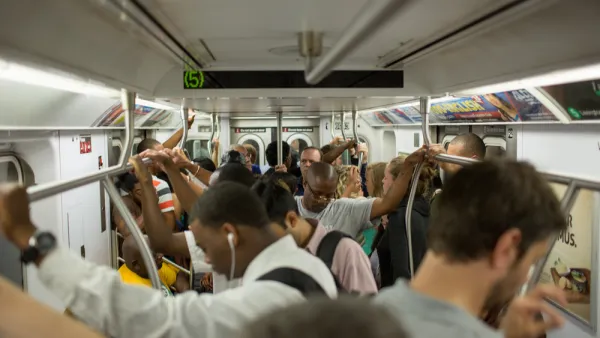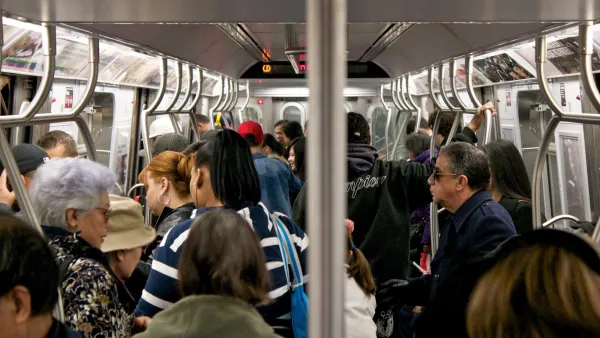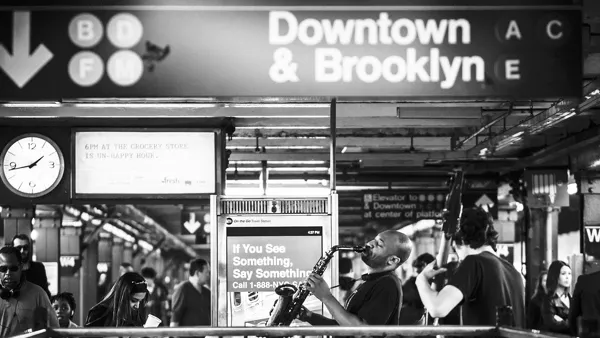The Atlantic has deep and detailed coverage of the expensive, obsolete, and decaying technology used by the New York subway system.
An incisive long read by James Somers details the missing links in the user experience of New York's subway system: countdown clocks and other mechanisms by which people can anticipate the arrival of trains. Somers starts the story with an anecdote about the Carroll Street station in Brooklyn, where transit riders stand outside the station to watch for the train's arrival—it's the only method of reconnaissance available:
"The only people who know exactly where that train is are on the train itself. The signal-tower operators don’t know; there’s no one in the Rail Control Center who could tell you, because the F isn’t hooked up to the Rail Control Center. Today, for the F train—along with the G, the A, B, C, D, E, J, M, N, Q, R, and Z—the best the system can say is that the train will get there when it gets there."
Any transit user can assess to the benefits of having reliable, real-time information about the arrival of their ride. Somers states it plainly that it shouldn’t be so difficult:
"It is easy to take for granted that governments move slowly, particularly on large infrastructure projects, particularly when those projects involve software. But we live in a world with cars that can drive themselves. Trains are huge objects that move in one dimension. How could it cost hundreds of millions of dollars and take nearly a decade just to figure out where they are and report that information to the public? Really: How?"
Somers proceeds to take a deep dive into the mechanics of the subway system a complex "of towers, signals, switches, and track sections" that is also "responsible for a disproportionate share of the costs and foibles in the operation and maintenance of New York’s subway system." The answer to all of these threats and malfunctions, according to the article is communications-based train control (CBTC). An MTA video, shown below, admits its faults in much the same way as detailed by Somers, in an effort to drum up support for CBTC.
As a counterpoint to the discussion about the current obsolescence of the system, Somers describes how a system using CBTC would work. Then this sobering statistic: "At the current pace of installation, the subway system as a whole won’t be converted to CBTC for another 175 years. It will cost $20 billion."
The story has a lot more on the many difficulties of upgrading the subway system, or as Somers puts it, "the story of a large organization’s first encounter with a large software project."
FULL STORY: Why New York Subway Lines Are Missing Countdown Clocks

Analysis: Cybertruck Fatality Rate Far Exceeds That of Ford Pinto
The Tesla Cybertruck was recalled seven times last year.

National Parks Layoffs Will Cause Communities to Lose Billions
Thousands of essential park workers were laid off this week, just before the busy spring break season.

Retro-silient?: America’s First “Eco-burb,” The Woodlands Turns 50
A master-planned community north of Houston offers lessons on green infrastructure and resilient design, but falls short of its founder’s lofty affordability and walkability goals.

Test News Post 1
This is a summary

Analysis: Cybertruck Fatality Rate Far Exceeds That of Ford Pinto
The Tesla Cybertruck was recalled seven times last year.

Test News Headline 46
Test for the image on the front page.
Urban Design for Planners 1: Software Tools
This six-course series explores essential urban design concepts using open source software and equips planners with the tools they need to participate fully in the urban design process.
Planning for Universal Design
Learn the tools for implementing Universal Design in planning regulations.
EMC Planning Group, Inc.
Planetizen
Planetizen
Mpact (formerly Rail~Volution)
Great Falls Development Authority, Inc.
HUDs Office of Policy Development and Research
NYU Wagner Graduate School of Public Service




























